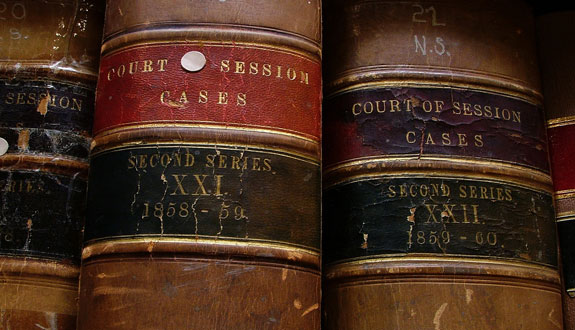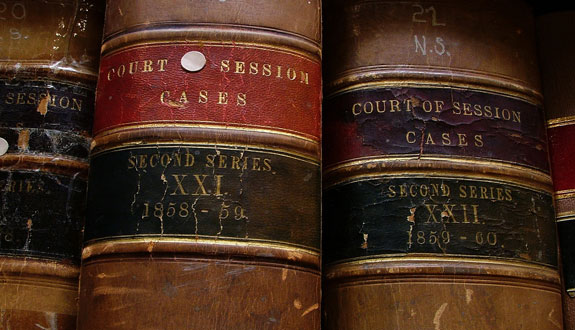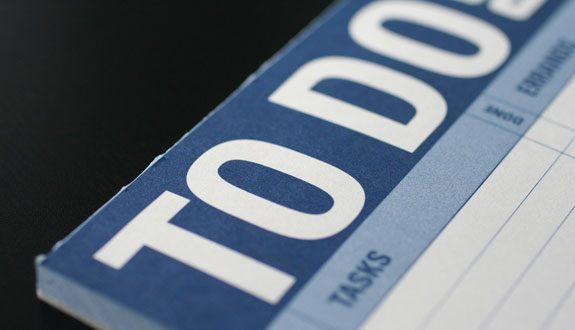
If you’ve done any LSAT from the last five or so years, you’ve certainly realized that the Reading Comprehension section can be brutally difficult. The LSAT as a whole has gotten slightly more difficult in the last few years, but the Logical Reasoning Section has not become quite as fearsome as Reading Comprehension. And three types of passages almost always give their readers the most trouble: passages about science, the law, and the arts. Unfortunately for us all, basically every LSAT has at least one passage on science, at least one passage about the law, and at least one passage about the arts.
If you’ve been recently tearing out your hair as you attempt to read through dozens of these seemingly impenetrable passages, you’ve read enough lately, so I’ll just cut straight to the point: in a three-part series, we’re going to discuss what makes these passages so difficult, and what we can do to make them a little less formidable. Last week, we discussed passages about science. Today, we’re continuing this series by discussing passages about the law.
Unlike passages about science or the arts, most of us didn’t expect passages about the law to be so difficult. After all, we chose this field. We may struggle to care about, and thus comprehend, passages about the finer points of science or aesthetics; we don’t really have that excuse for passages about the law. Anyone taking the LSAT is planning on paying a princely sum to spend three years learning about the law and a lifetime practicing it, so an at least passing interest in the law can be presumed.
Plus, most of us have at least a baseline familiarity with the law. We perhaps didn’t gain any academic experience dealing with matters of science or aesthetics, but many of us on a pre-law track chose a major, like political science, that we were told would shape our young minds into that of a perspicacious legal thinker. Even if poly sci’s connection to material in law school is, in my opinion, fairly tenuous, it’s at least somewhat tethered to the legal field. The same can’t be said of that major’s connection to the vagaries of fish farming or the architectural sculpture of Eileen Gray. Plus, we’ve all seen a legal drama or two in our day.
So what makes the passages about our legal system so vexing? For one, our grasp of how the law actually works may be a little more suspect than we realize. Even if we took one of those classic pre-law majors, we probably didn’t actually learn how the legal system operates or what the work of an attorney actually entails. (You may be surprised to learn that the same is often said of law school graduates as well, but that’s an issue for another blog post.) Our knowledge of the law is so thoroughly colored and distorted by pop culture depictions, that our brains sometimes can’t square new information about the legal system that doesn’t quite conform to how things work in the Dick Wolf Cinematic Universe. Which is troubling, because most of what appears on these legal passages won’t look like the law we see depicted in Law & Order: Special Victims Unit.
So what can we do to feel a little less lost on these law passages? Many older passages would discuss the minutiae of the courtroom — strategies utilized by trial lawyers, ways judges handled and admitted evidence, ethical considerations lawyers must consider and weigh and balance. These passages take test takers to a milieu that’s unfamiliar to us (even if, perhaps especially if, our understanding was based on pop culture depictions of courtrooms) and frequently used lawyerly jargon and insider-y shorthand that confused readers (for instance, referring to judicial decisions as coming from “the bench”). For those passages, we have a helpful primer on the judicial system and a glossary of legal terms that might ballast you in the murky waters of the courtroom.
More recently, however, these legal passages have stepped out of the courtroom and into other areas of jurisprudence. We’ve seen passages about what happens before criminal cases reach the courtroom — like the techniques police and prosecutors might use to interview witnesses, and why some witness may be unreliable. We’ve also seen several recent passages discuss legal fields in the abstract. There have been passages about international law — the laws and regulations that affect how countries can cooperate to, for instance, stymie pollution. There have been passages about copyright and trademark law, and why certain professions don’t take advantage of the protections afforded by those laws. There have been passages about insider trading law, and whether it helps or hurts markets. Finally, we’ve also seen some passages that discuss the merits of the reasoning judges relied on in rendering a decision. Some of these passages discuss whether Supreme Court Justices’ reasoning in famous cases withstand scrutiny. Others have discussed whether judges have to sincerely believe that their reasoning is sound when they offer their decisions.
These passages tend to follow similar patterns. Thinking about a few key issues as you read and reflect on the passages can make it a lot easier to understand the point the passage is making. First, think about the technique or law or judicial decision in question. What is its purpose? Is the author on board with that? Generally we’re talking about techniques that are aimed at ensuring justice, or laws and decisions that attempt to curb pollution or make markets function fairly and efficiently or end the systemic oppression of people. So, yeah, the author’s gonna be on board. The authors of these passages are probably lawyers, but that doesn’t (necessarily) mean they’re monsters.
Next, think about the actual effects of that technique or the law or the judicial decision. Is the author still on board? Many times, no. The law or decision might not accomplish its intended purpose (sometimes it may even make the situation more dire). Sometimes the technique or decision or law is based on a very shaky foundation — it doesn’t square with how people actually act or its based on assumptions that won’t withstand any serious scrutiny.
Finally, ask whether the author proposes a better way. Usually yes! The lawyerly know-it-alls who write the passage generally present a better way to accomplish the intended purpose of the technique or law or judicial decision.
Once you get all the answers to these questions, you’ll understand the main point, which is usually that the old technique or law or reasoning was suspect, and that we should adopt a new way. You’ll understand the primary purpose of passage, which is usually to criticize old technique or law or reasoning and propose a solution. And you’ll understand the author’s attitude, which is usually pro-intended purpose, anti-actual effects, pro-proposed solution. Once you have those three big issues down, you’ll understand all the important parts of the passage.
So even when these passages might present you a variety of unfamiliar legal concepts, let this approach guide your reading of the passage. You’ll be much better footing than if you instead let your faint memories of your poly sci classes or courtroom dramas guide you, anyway.
Stay tuned next week for a post on how to handle difficult passages about the arts.




